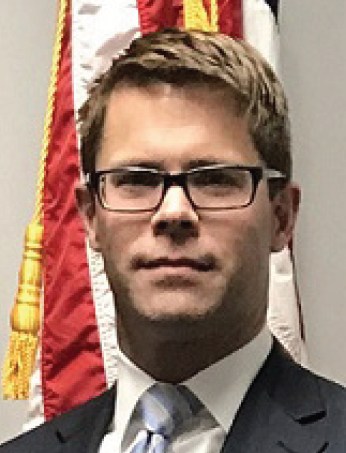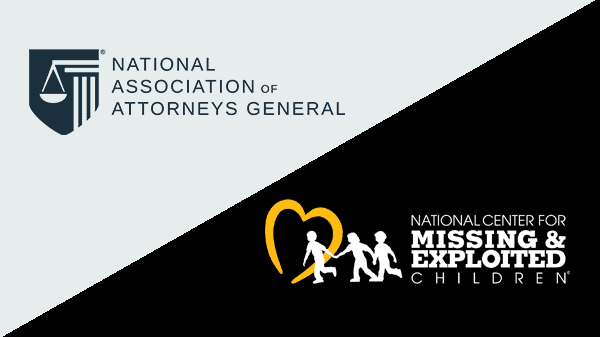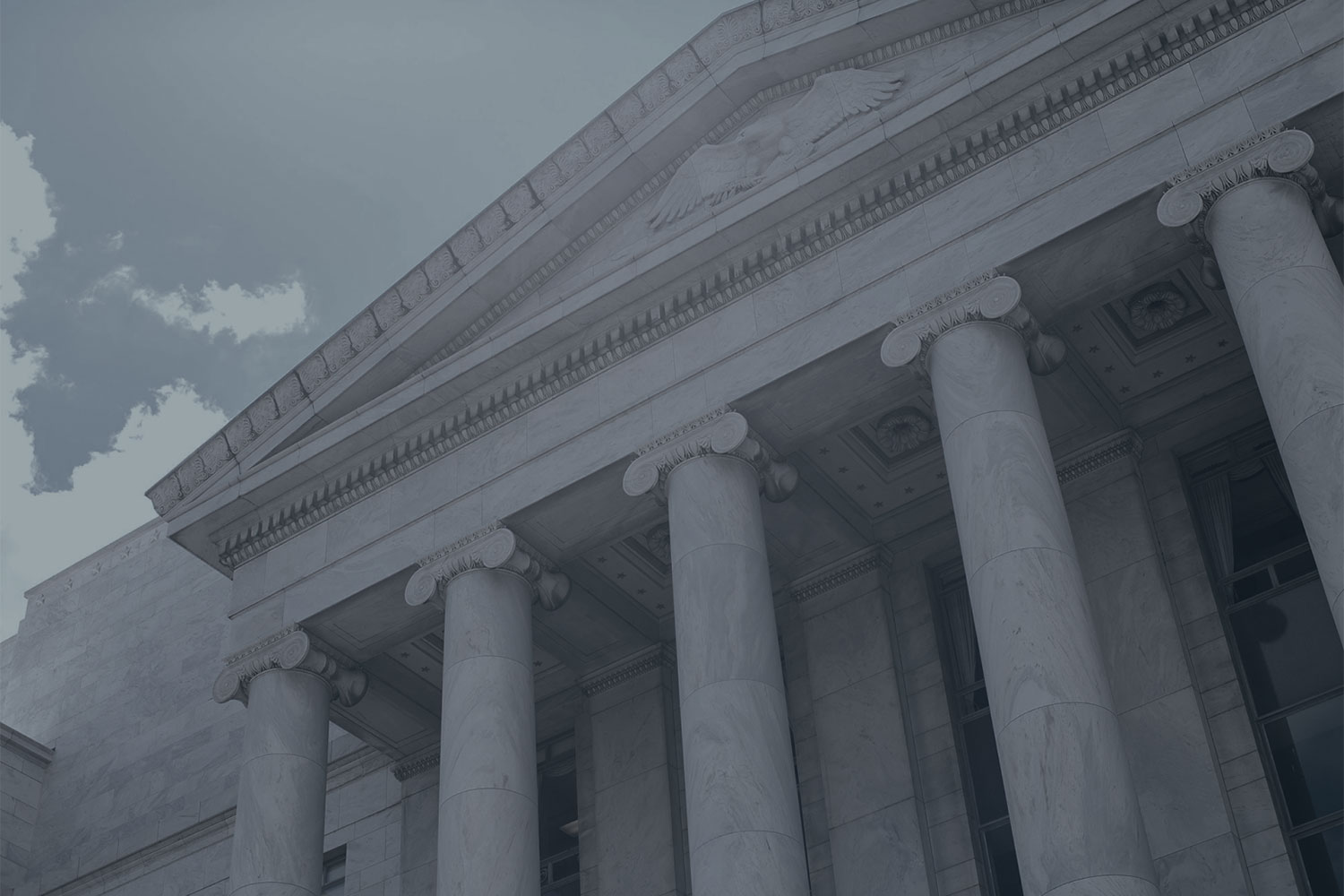-
 Assistant U.S. Attorney, Criminal Health Care Fraud CoordinatorUnited States Attorney’s Office in the Eastern District of Tennessee
Assistant U.S. Attorney, Criminal Health Care Fraud CoordinatorUnited States Attorney’s Office in the Eastern District of Tennessee
Timothy C. Harker1, Assistant U.S. Attorney, Criminal Health Care Fraud Coordinator for the United States Attorney’s Office in the Eastern District of Tennessee
More than thirty years of law review articles insist that overzealous prosecutors, intentionally or negligently exceeding the scope of their legitimate authority, present a systemic threat to the very foundation of our criminal justice system: “Prosecutorial suppression and falsification of evidence strikes [sic] at the very heart of our criminal justice system” (1987);2 “prosecutorial misconduct [poses] a far more pernicious threat to the future of adversarial justice and individual rights” (1992);3 “[o]ur system of justice . . . is compromised [by prosecutorial misconduct] even when the defendant actually committed the offense for which he is tried” (1997);4 prosecutorial misconduct “illuminate[s] one of the most fundamental issues in criminal justice and the very notion of government under law” (1998);5 intentional prosecutorial misconduct “presents a threat to the integrity of the criminal justice system” (1999);6 prosecutorial misconduct “may still threaten to undermine public confidence in the fairness of the proceeding as a whole and the general integrity of the criminal justice system” (2005);7 “[t]here is an obvious need for an effective check on prosecutorial misconduct” (2011);8 “[p]rosecutorial discretion poses an increasing threat to justice” (2013);9 there is an “ongoing threat of prosecutorial misconduct” (2017).10
In reality, there is virtually no empirical support for these propositions. On the contrary, the available evidence supports the conclusion that prosecutorial misconduct occurs with admirable infrequency and the nation’s federal, state, and local prosecutors perform their daily tasks with an impressive fidelity to their constitutional and ethical responsibilities. The vitriol with which they are attacked is unwarranted.
The “Evidence”
I surveyed hundreds of law review articles, magazine essays, newspaper editorials, and mass media publications that address prosecutorial misconduct. Most of this literature, to the extent it attempts to justify its position empirically relies upon four sources: (1) a 2003 report by the Center for Public Integrity; (2) a 2000 study by the Innocence Project, updated through 2005, which identified 154 people who served time for crimes they did not commit; (3) a 2000 study by a Columbia Law School professor that reviewed 4,578 state capital cases and concluded that “sixty-eight percent contained serious error warranting reversal;” and (4) a 1999 Chicago Tribune study that identified 381 homicide convictions reversed for “serious prosecutorial misconduct.”11 Subject to some minor exceptions, these four studies are all that substantiate the many law reviews articles, newspaper editorials, and magazine pieces lamenting the putative scourge of prosecutorial misconduct. Let’s take a closer look.
Study by the Center for Public Integrity
The Center for Public Integrity study, conducted more than fifteen years ago, found “over two thousand appellate cases since 1970 in which prosecutorial misconduct led to dismissals, sentence reductions, or reversals.”12 Stated otherwise, the study found that, on average, there were approximately sixty instances of “proven” prosecutorial misconduct per year (between 1970 and 2003) in the entire United States.13 These examples include cases in which the only form of misconduct was “improper opening or closing arguments.”14
To put the numbers in perspective, there were 2,249,159 total felony convictions in the United States in 2007, consisting of 72,436 federal felony convictions15 and 2,176,723 state felony convictions.16 Thus, sixty instances of prosecutorial misconduct constitute a negligible fraction of the total annual felony prosecutions. If the frequency of prosecutorial misconduct were actually one hundred times greater than implied by the Center for Public Integrity, approximately 99.73% of all felony convictions in 2007 would have been untarnished by such conduct.
Study by the Innocence Project
Next, many authors rely upon data compiled by the Innocence Project, and summarized in Actual Innocence: Five Days to Execution, and Other Dispatches from the Wrongly Accused.17 But, Actual Innocence is about wrongful convictions per se, with a focus on the role of DNA testing in exoneration. It’s not about prosecutorial misconduct any more than it’s about any of the other factors that its authors believe led to wrongful convictions, such as DNA inclusions, other forensic inclusions, false confessions, biased informants, false witness testimony, bad defense lawyering, microscopic hair comparison, defective or fraudulent science, police misconduct, serology inclusion, and mistaken identification.18 There were 248 instances of mistakes or misconduct in the sixty-two wrongful convictions reported by the Innocence Project, approximately 10% of which were attributed to prosecutorial misconduct.19 It is illuminating that some of the strongest evidence mustered by the anti-prosecutor cohort is pulled from a source concerned primarily with a different issue.
Study by Professor Liebman
Other voices decrying prosecutorial misconduct rely on a study conducted by Columbia Law Professor James Liebman. For example, one author believes Liebman’s study shows “one can no longer indulge in the comforting but false fantasy that our criminal justice system sufficiently protects the innocent from prosecutorial misconduct.”20 To reach that conclusion, however, required some selective reading of Professor Liebman’s findings. His study addressed all types of error, not only prosecutorial misconduct. In Professor Liebman’s own words, “the overall error-rate in our capital punishment system was 68%.”21 And, “the most common errors . . . are [] egregiously incompetent defense lawyering (accounting for 37% of . . . reversals).”22 Prosecutorial misconduct “account[ed] for another 16%.”23 Thus, of the 4,578 cases reviewed by Professor Liebman, 3,113 had some form of error. Of those, the errors in 16% (or 498 cases) were attributable to prosecutorial misconduct. That’s roughly 22 cases per year from 1973 through 1995. Using Professor Liebman’s numbers, only 7% of these cases resulted in a defendant being “cleared of the capital offense.” This means that Professor Liebman’s study supports only the following narrow conclusion vis-à-vis prosecutorial misconduct: during each year from 1973 through 1995, an average of 1.5 innocent defendants were convicted of a capital offense due to either intentional or unintentional prosecutorial misconduct.
Study by the Chicago Tribune
Lastly, too many commentators rely on a 1999 Chicago Tribune study that found “since 1963, 381 homicide convictions have been reversed for serious prosecutorial misconduct, including using false evidence or suppressing exculpatory evidence.”24 The anecdotes relayed by the Tribune involve prosecutors hiding exculpatory evidence (an alibi for the defendant), framing innocent men (trying a black man when the victim’s brother said the killer was white), knowingly mischaracterizing evidence (depicting red paint as human blood), and other forms of appalling prosecutorial misconduct.25 The problem is, assuming all the allegations made by the Tribune are true and portrayed in context, a review of the five-part article reveals that nearly every salacious story involved prosecutorial misconduct that occurred prior to the early 1980s. The point is not to defend the misconduct that tainted these convictions or to dispute whether prosecutorial misconduct was a problem between 1963 and the early 1980s. (Johns introduced the Tribune study with the phrase “since 1963”; she should have written “between 1963 and about 1985.”) Rather, the point is that a dated compilation of anecdotes cannot substitute for the lack of timely empirical evidence. In this respect, the sheer multitude of scholarly articles relying on the Tribune study is itself cause for concern.26 There ain’t much meat on those bones, but you wouldn’t know it from the literature.
Taking Another Look
The results of the above analysis are consistent with other indirect methods of approximating the frequency of prosecutorial misconduct. For example, analyzing the percentage of felony convictions in California that were the subject of any type of prosecutorial misconduct from 1997 through 2006 is helpful. California courts reported that during those ten years there were 444 instances of prosecutorial misconduct in California.27 But there were also 2,107,067 felony convictions in California during the same time period.28 Here again, if the frequency of prosecutorial misconduct were actually one hundred times greater than reported, almost 98% of all felony cases in California during that time would have been completely free from any form of prosecutorial misconduct. Although many authors suggest that the problem of prosecutorial misconduct is larger than indicated by the relevant data, none appears to believe that the problem is one hundred times larger.
A similar conclusion may be reached in a different fashion. Not only does prosecutorial misconduct occur in a tiny fraction of all cases resulting in felony convictions, allegations of prosecutorial misconduct are also a tiny fraction of all allegations of attorney misconduct generally. As depicted in the following chart, both substantiated and unsubstantiated allegations of prosecutorial misconduct constitute a negligible fraction of all attorney misconduct allegations in Illinois from 2010 through 2016.
| Illinois Attorney General Registration & Disciplinary Commission | ||||||
|---|---|---|---|---|---|---|
| Annual Reports of All Attorney Misconduct, 2010 through 2016 | ||||||
| Year | Allegations (All) | Allegations (Prosecutorial) | % of Allegations (Prosecutorial) | Sanctions (All) | Sanctions (Prosecutorial) | % of Sanctions (Prosecutorial) |
| 201629 | 7,075 | 175 | 2.473% | 108 | 1 | 0.926% |
| 201530 | 7,224 | 126 | 1.744% | 129 | 0 | 0.000% |
| 201431 | 7,174 | 99 | 1.380% | 116 | 2 | 1.724% |
| 201332 | 7,581 | 117 | 1.543% | 155 | 1 | 0.645% |
| 201233 | 8,299 | 71 | 0.856% | 106 | 1 | 0.943% |
| 201134 | 7,775 | 64 | 0.823% | 166 | 0 | 0.000% |
| 201035 | 7,014 | 99 | 1.411% | 155 | 1 | 0.645% |
| Total | 52,142 | 751 | 1.44% | 935 | 6 | 0.642% (avg.) |
In short, there is virtually no evidence supporting the view that prosecutors around the nation systematically disregard their sworn oaths and ethical responsibilities; indeed, the evidence is to the contrary. But, the view persists and is plagued by an incoherence I can address only briefly in this essay. For example, virtually all articles addressing putative prosecutorial misconduct fail to define the term. This allows them to include unintentional mistakes and harmless error in their calculations and to attribute other hot-button issues (e.g., police misconduct, incarceration rates, mandatory minimum sentences, the use or non-use of grand juries, and plea bargaining, to name a few) to the putatively nefarious machinations of prosecutors. To take one example, an article by one commentator explained and excused the blatant misconduct of Mike Nifong, the prosecutor in the notorious Duke lacrosse case. The author claimed that historically “prosecutors never charged white men who raped African American women.” Of this proposition, “Nifong was undoubtedly mindful.”36 Plausible, no doubt; but the author concluded that “[i]f Nifong had failed to pursue the prosecution of wealthy white college students accused of raping a poor black woman, he would have been justifiably criticized.”37 The author’s outrageous conclusion: we would be justified in criticizing Nifong, she believes, if he had not prosecuted innocent people. One can only blanch at this.
Conclusion
Prosecutorial misconduct is a real problem only in the sense that when it occurs it may result in tragic and unjust outcomes. These lamentable outcomes are widely known. But, they are widely known because they are so lamentable. Of the millions of annual felony prosecutions in the United States, a reassuringly-negligible percentage are tainted by prosecutorial misconduct. This professional and ethical competence is not newsworthy, which is why it is not in the news.
I am happy to report that the dearth of empirical evidence for prosecutorial misconduct nationwide confirms my personal experience at the Office of the Attorney General in New Jersey and at the United States Attorney’s Office for the Eastern District of Tennessee. During my years with both offices, I have interacted with hundreds of Assistant United States Attorneys, Deputy Attorneys General, Assistant Attorneys General, Assistant Prosecutors, District Attorneys, and Assistant District Attorneys, virtually all of whom take their professional, legal, and ethical obligations seriously. The Constitution binds them by oath or affirmation to do so, and all of the empirical evidence supports the happy conclusion that they satisfy this oath.
Endnotes
- Timothy C. Harker is the Criminal Health Care Fraud Coordinator for the United States Attorney’s Office in the Eastern District of Tennessee. The views expressed herein are his own. A version of this article appeared in the University of Tennessee Law Review. https://papers.ssrn.com/sol3/papers.cfm?abstract_id=3206643.
- Richard Rosen, Disciplinary Sanctions Against Prosecutors for Brady Violations: A Paper Tiger, 65 N.C. L. Rev. 693, 731 (1987).
- Bennett L. Gershman, The New Prosecutors, 53 U. Pitt. L. Rev. 393, 405 (1992).
- Joseph R. Weeks, No Wrong Without a Remedy: The Effective Enforcement of the Duty of Prosecutors to Disclose Exculpatory Evidence, 22 Okla. City U. L. Rev 833, 835 (1997).
- Kenneth Rosenthal, Prosecutor Misconduct, Convictions, and Double Jeopardy: Case Studies in an Emerging Jurisprudence, 71 Temp. L. Rev. 887 (1998).
- Paul J. Spiegelman, Prosecutorial Misconduct in Closing Argument: The Role of Intent in Appellate Review, 1 J. App. Prac. & Process 115, 118 (1999).
- Alexandra White Dunahoe, Revisiting the Cost-Benefit Calculus of the Misbehaving Prosecutor: Deterrence Economics and Transitory Prosecutors, 61 N.Y.U. Ann. Surv. Am. L. 45, 67 (2005).
- David Keenan et al., The Myth of Prosecutorial Accountability After Connick v. Thompson: Why Existing Professional Responsibility Measures Cannot Protect Against Prosecutorial Misconduct, 121 Yale L.J.F. 203, 212 (2011).
- Glenn Harlan Reynolds, Ham Sandwich Nation: Due Process When Everything is a Crime, 113 Colum. L. Rev. Sidebar 102 (2013).
- Nina W. Chernoff, How Foster Can be Useful to Defense Attorneys, Champion 40, (Jan.–Feb. 2017).
- Margaret Z. Johns, Reconsidering Absolute Prosecutorial Immunity, 2005 BYU L. Rev. 53, 60–61 (2005).
- Keenan et al., supra note 8, at 209–10.
- The study may also have counted as “prosecutorial misconduct” errors committed by police and other government actors involved in the investigative process. See George A. Weiss, Prosecutorial Accountability After Connick v. Thompson, 60 Drake L. Rev. 199, 218–219 (2011).
- Methodology, The Team for Harmful Error: How the Center Compiled Data for These Articles, Ctr. for Pub. Integrity (May 19, 2014, 12:19 PM), http://www.publicintegrity.org/2003/06/26/5530/methodology-team-harmful-error.
- U.S. Dep’t of Justice, United States Attorneys’ Annual Statistical Report: Fiscal Year 2007 at 11 (2008), http://www.justice.gov/usao/reading_room/reports/asr2007/07statrpt.pdf. Data for 2012 are available for federal, but not state, prosecutions.
- Steven W. Perry & Duren Banks, U.S. Dep’t of Justice, 2007 National Census of State Court Prosecutors 5 (Dec. 2011), http://www.bjs.gov/content/pub/pdf/psc07st.pdf.
- Barry Scheck, Peter Neufeld & Jim Dwyer, Actual Innocence: Five Days to Execution, and Other Dispatches from the Wrongly Convicted XIV (2000); See, alos, Johns, supra, note 18, at 61 n.51.
- Scheck et al., supra note 24, at app. 2 at 263.
- Id.
- Johns, supra note 18, at 60 (emphasis added).
- James Liebman et al., Habeas: Capital Attrition: Error Rates in Capital Cases, 1973-1995, 78 Tex. L. Rev. 1839, 1850 (1999–2000) (emphasis added).
- Id.
- Id.
- Johns, supra note 18, at 61.
- Armstrong & Possley, supra note 13.
- See, e.g., Angela J. Davis, Arbitrary Justice: The Power of the American Prosecutor 131 (2006); Stephanos Bibas, Prosecutorial Regulation Versus Prosecutorial Accountability, 157 U. Pa. L. Rev. 959, 976 n.67 (2009); Adam M. Gershowitz, Prosecutorial Shaming: Naming Attorneys to Reduce Prosecutorial Misconduct, 42 U.C. Davis L. Rev. 1059, 1063 n.12 (2009); Keenan et al., supra note 8, at 212 n.47; Daniel Medwed, The Zeal Deal: Prosecutorial Resistance to Post-Conviction Claims of Innocence, 84 B.U. L. Rev. 125, 174-175 n.255 (2004).
- Cal. Comm’n on the Fair Admin. of Justice, Final Report 71 (Gerald Uelmen & Chris Boscia eds., 2008), http://digitalcommons.law.scu.edu/cgi/viewcontent.cgi?article=1000&context=ncippubs [hereinafter California Justice Report].
- Kamala D. Harris, Cal. Dep’t of Justice, Crime in California 2012, at 49 (2013), https://oag.ca.gov/sites/all/files/agweb/pdfs/cjsc/publications/candd/cd12/cd12.pdf.
- Attorney Registration & Disciplinary Comm’n, Annual Report of 2016, at 20, 37 (2017), http://www.iardc.org/AnnualReport2016.pdf.
- Attorney Registration & Disciplinary Comm’n, Annual Report of 2015, at 13, 29 (2016), http://www.iardc.org/AnnualReport2015.pdf.
- Attorney Registration & Disciplinary Comm’n, Annual Report of 2014, at 14, 31 (2015), http://www.iardc.org/AnnualReport2014.pdf.
- Attorney Registration & Disciplinary Comm’n, Annual Report of 2013, at 15, 30 (2014), http://www.iardc.org/AnnualReport2013.pdf.
- Attorney Registration & Disciplinary Comm’n, Annual Report of 2012, at 13, 25 (2013), http://www.iardc.org/AnnualReport2012.pdf.
- Attorney Registration & Disciplinary Comm’n, Annual Report of 2011, at 17, 30 (2012), http://www.iardc.org/AnnualReport2011.pdf.
- Attorney Registration & Disciplinary Comm’n, Annual Report of 2010, at 17, 28 (2011), http://www.iardc.org/AnnualReport2010.pdf.
- Davis, Failure to Discipline, supra note 16, at 297.
- Davis, Failure to Discipline, supra note 16, at 297–98.





